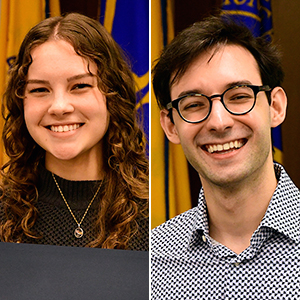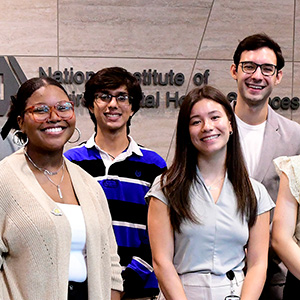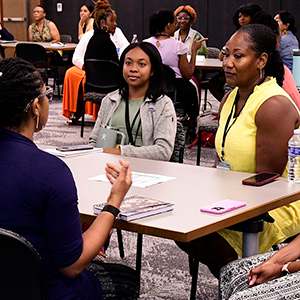NIEHS published a completely revamped edition of its popular “ Environment and Health A to Z (2MB)” booklet Feb. 20, bringing environmental health to life for students, teachers, and the general public. With whimsical illustrations, the 13-page publication describes 26 different topics, one for each letter of the alphabet.
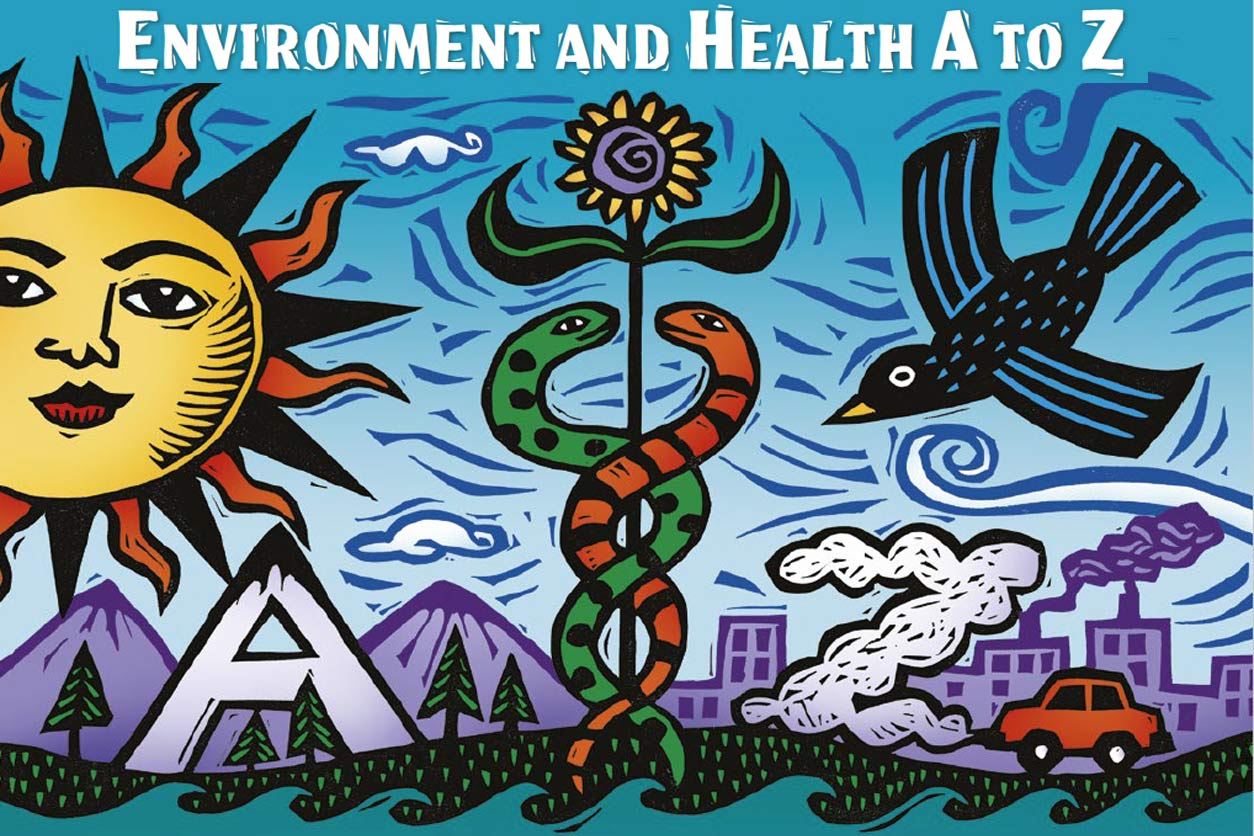 “Environment and Health A to Z” is the latest in a slew of educational materials produced by NIEHS.
“Environment and Health A to Z” is the latest in a slew of educational materials produced by NIEHS.The colorful guide is the latest educational resource from the NIEHS Office of Communications and Public Liaison (OCPL) to explain environmental health research and provide knowledge people can use to protect their own health. These resources are part of a larger effort by NIEHS to invest in the future of the field by increasing awareness of health, science, and the environment we live in today.
Timely topics
The original 1996 publication, titled “Environmental Diseases A to Z” was written for grade school children, to help them understand that many illnesses were linked to pollution and other environmental contaminants. The new edition introduces recent topics, such as endocrine disruptors, epigenetics, the microbiome, and Zika virus.
It also includes suggestions, based on NIEHS research, for people concerned about the effects exposures might have on their health. For example, to help protect yourself from the effects of ozone, the booklet recommends that you check air pollution forecasts in your area and avoid spending too much time outdoors on high-ozone days.
Like other NIEHS educational resources, the booklet will be distributed at scientific conferences, campus tours, schools, health and career fairs, and community forums. It can also be downloaded for free. Education outreach is a key part of the NIEHS mission to discover how the environment affects people, in order to promote healthier lives.
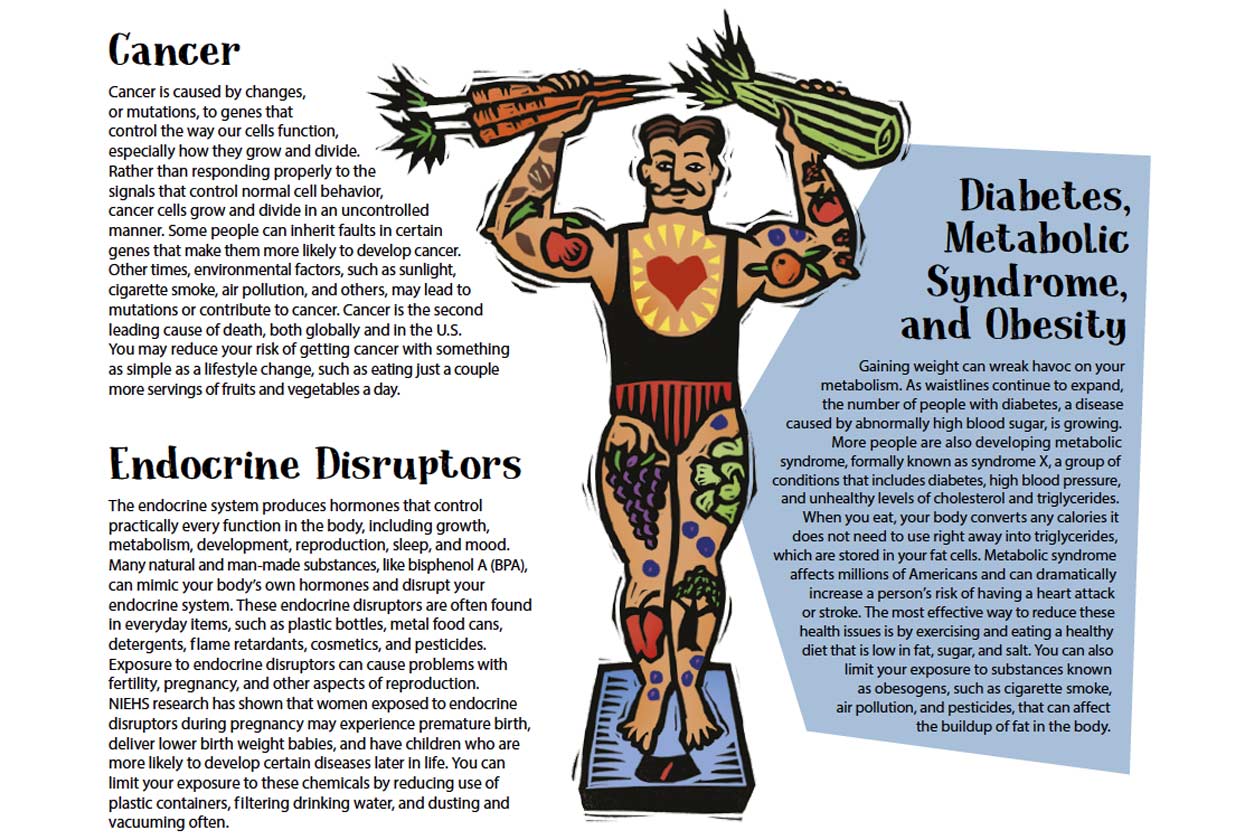 Colorful illustrations by artist Susan Todd lend the booklet a fanciful air that provides a counterbalance to its serious content. (Photo courtesy of NIEHS)
Colorful illustrations by artist Susan Todd lend the booklet a fanciful air that provides a counterbalance to its serious content. (Photo courtesy of NIEHS)For the public — environmental health topics
- OCPL offers brochures and fact sheets on nearly 75 high priority topics, including arsenic, mold, cell phone radiation, hydraulic fracturing, lead, and recently, per- and polyfluorinated chemicals (PFAS).
- Web content addresses other topics, exposures, and diseases connected to environmental health. Examples include epigenetics, toxicology, and alternatives to animal testing. Many of these pages are available for syndication, meaning you can place the information on your website, and it will be updated as NIEHS updates the content based on new research.
“We’ve used fact sheets at all 25 community forums with [NIEHS and National Toxicology Program Director] Dr. Birnbaum, depending on the topic chosen by the local stakeholders — from West Harlem and Tucson to San Juan and the San Joaquin Valley,” said John Schelp, from the NIEHS Office of Science Education and Diversity (OSED).
 NIEHS helps build understanding of environmental health science by offering educational materials for teachers, students, community groups, and the general public.
NIEHS helps build understanding of environmental health science by offering educational materials for teachers, students, community groups, and the general public.For kids, parents, and educators — learning materials
NIEHS provides classroom activities and curricula, as well as easy access to reference materials based on environmental health research. For example, in an interactive activity on chemicals, Toxie the cat leads kids from room to room in a typical house, pointing out chemical hazards like carbon monoxide, lead, chlorine, and radon.
“The 21st Century Learning Skills and the Next Generation Science Standards teach that science is about problem solving,” said Huei-Chen Lee, Ph.D., K-12 science education program manager in OSED. “We help teachers to build knowledge, not just acquire information passively.”
In addition to compiling a database of lesson plans and other materials, NIEHS has created Kids Environment Kids Health, a fun and interactive website with games, coloring sheets, and other activities for kids of all ages to enjoy.
(Marla Broadfoot, Ph.D., is a contract writer for the NIEHS Office of Communications and Public Liaison.)





